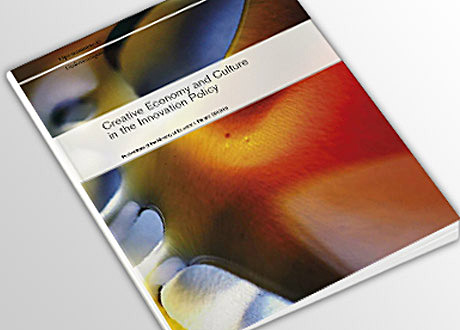By: Haydn Shaughnessy
The idea of the creative city or creative class took a back seat while the chatter among businesses and policy makers turned to innovation. Yet complexity economics tells us cities are where the bulk of innovation happens. Is it time to revisit ‘places’ as the focal point of innovation activity? A new report suggests yes but we have also to revisit what we understand by a creative city or region.
Creative Economy and Culture in Innovation Policy is a report of the Finish Ministry of Education. Before you scream ‘Mandarins’ and avert your eyes (what do mandarins know about the chaotic world of innovators?), stop. Here is a very important proposition about where companies will locate their innovative activity and a seriously strong clue for what policy makers should do to respond to enterprises seeking competitive advantage.
The proposition may mean more to a policy maker, a local authority, a municipal official or a city manager than it would to an entrepreneur but it would be short sighted of executives to overlook it.
Why do many companies locate manufacturing capacity away from European or US markets? largely because Asian and Latin American markets are growing and US/EU ones are not. What does that mean for the future of employment and creative endeavour here? According to this report it means our best chance of attracting employment investment is by becoming more creative – and visibly so. Our culture has to be developed – by policy if necessary – from whatever it might be into this more visible home for creativity. But what that means is not just a home for software developers who like to write apps, or for artists and musicians. We are not talking about a vibe that creatives produce for us. The culture of creativity is a responsibility that we all have a role in conveying.
This report suggests that our cities and populations have to become more intelligent about products. We have to be savvy and engaged because that intelligence, the knowledge about products, apps, new ways of doing that we display through purchases and lifestyles, is a strong signal that we have something to offer the creative end of the product and service development life-cycle. We are the creative culture.
And in turn this culture of innovation is a precious commodity that officials, policy makers, those responsible for the identify of a city or region have to nurture.
Like all reports – from mandarins or consultants – ‘Creative Culture’ says many more things that are less important. That’s another way of saying, there is a lot of noise here and the noise-signal ratio is not conducive to quick knowledge acquisition.
Nonetheless the Finish authors are surgical in identifying important transitionary realities and the need for enterprises and policy makers and their populations to co-create the culture we all need – one where we, as employees and consumers, are game for experimentation and creativity.
Locations that can move beyond ‘normal’ lifestyles and comfortable co-existence are far more likely to be lab-like centres of creativity and innovation.
By Haydn Shaughnessy
About the author
 Haydn Shaughnessy, senior editor, has worked at the epicentre of innovation in a 25 year career spanning journalism, consultancy and research management. He began his technology career as a manager of application research in broadband, mobile and downstream satellite services and has maintained a continuous production of analysis and intellectual material around innovation since then, having written on Wired Cities, Fibre to the Home, Future Search Engines, and international collaboration. He is an emerging thought leader in systemic innovation building on his PhD research in large scale economic transformations. He was previously a parter at The Conversation Group, the leading global social technologies consultancy where he helped companies such as Alcatel Lucent, Volvo, General Motors, Symbian Foundation, and Unilever adapt to the current transformations in the global digital economy. He has written for the Wall St Journal, Forbes.com, Harvard Business Review, and many newspapers as well as making documentaries for the BBC, Channel 4 and RTE. His consultancy and research work encompasses changing enterprise structures, new business models and long-term trends in attitudes. He is in demand as a speaker on the impact of changing attitudes on business and on gearing innovation to new consumer requirements.
Haydn Shaughnessy, senior editor, has worked at the epicentre of innovation in a 25 year career spanning journalism, consultancy and research management. He began his technology career as a manager of application research in broadband, mobile and downstream satellite services and has maintained a continuous production of analysis and intellectual material around innovation since then, having written on Wired Cities, Fibre to the Home, Future Search Engines, and international collaboration. He is an emerging thought leader in systemic innovation building on his PhD research in large scale economic transformations. He was previously a parter at The Conversation Group, the leading global social technologies consultancy where he helped companies such as Alcatel Lucent, Volvo, General Motors, Symbian Foundation, and Unilever adapt to the current transformations in the global digital economy. He has written for the Wall St Journal, Forbes.com, Harvard Business Review, and many newspapers as well as making documentaries for the BBC, Channel 4 and RTE. His consultancy and research work encompasses changing enterprise structures, new business models and long-term trends in attitudes. He is in demand as a speaker on the impact of changing attitudes on business and on gearing innovation to new consumer requirements.

